AIRTRAC HELPS THE FLOW OF PASSENGERS & PARCEL FREIGHT
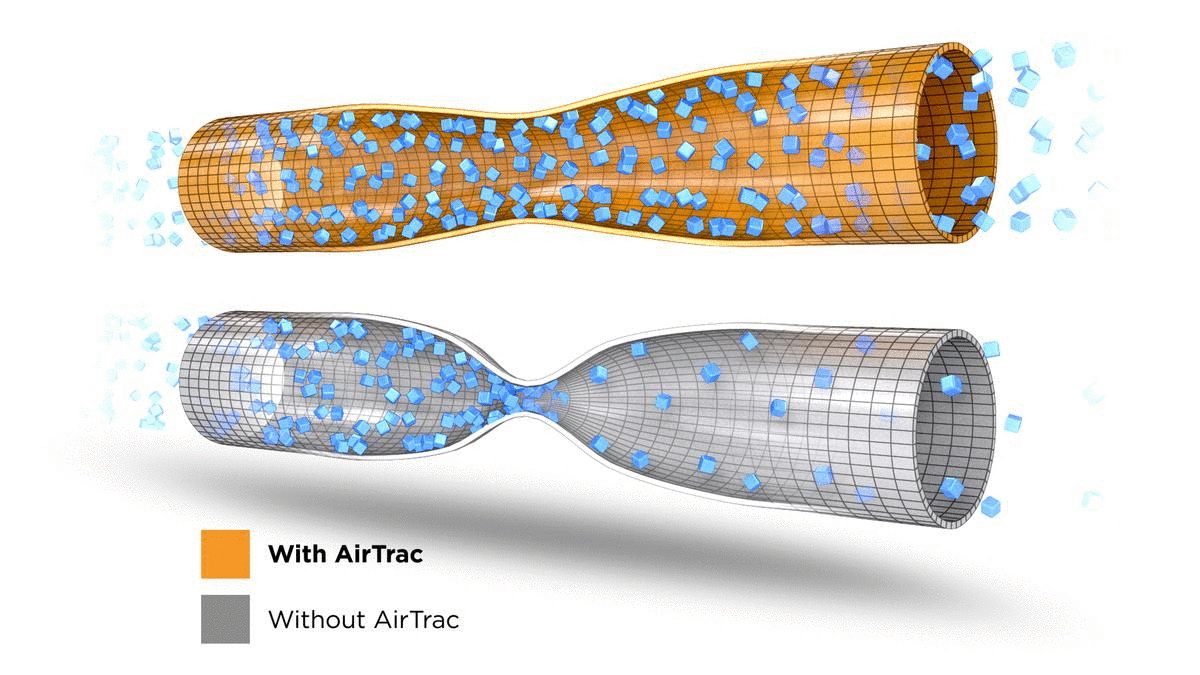
Throughout history, as a new mode of transportation is developed and expands, existing modes of transportation tend to expand as well. Existing infrastructure is near, if not at maximum capacity. Yet demand for expanded and more convenient mobility continues to grow. AirTrac will not replace highway travel, nor will it replace air passenger or rail travel.
Instead, it will serve as an additive technology to optimize the efficiency and increase the utility of other, current modes of transportation. AirTrac will make it possible for air, road and rail to absorb the increasing demand that will push the limits of their own capacity for sustainable growth, allowing these industries to focus on the most strategic and profitable objectives going forward.
Mobility begets mobility, and history teaches that, when a new mode of transportation comes online, all existing other modes of transportation experience growth. AirTrac will enable a greater percentage of the population to take advantage of true, point-to-point, regional high-speed transit. This mobility will foster economic opportunity, advance personal financial security for the majority of our citizens, and ultimately increase demand for all modes of mass transportation.
Road
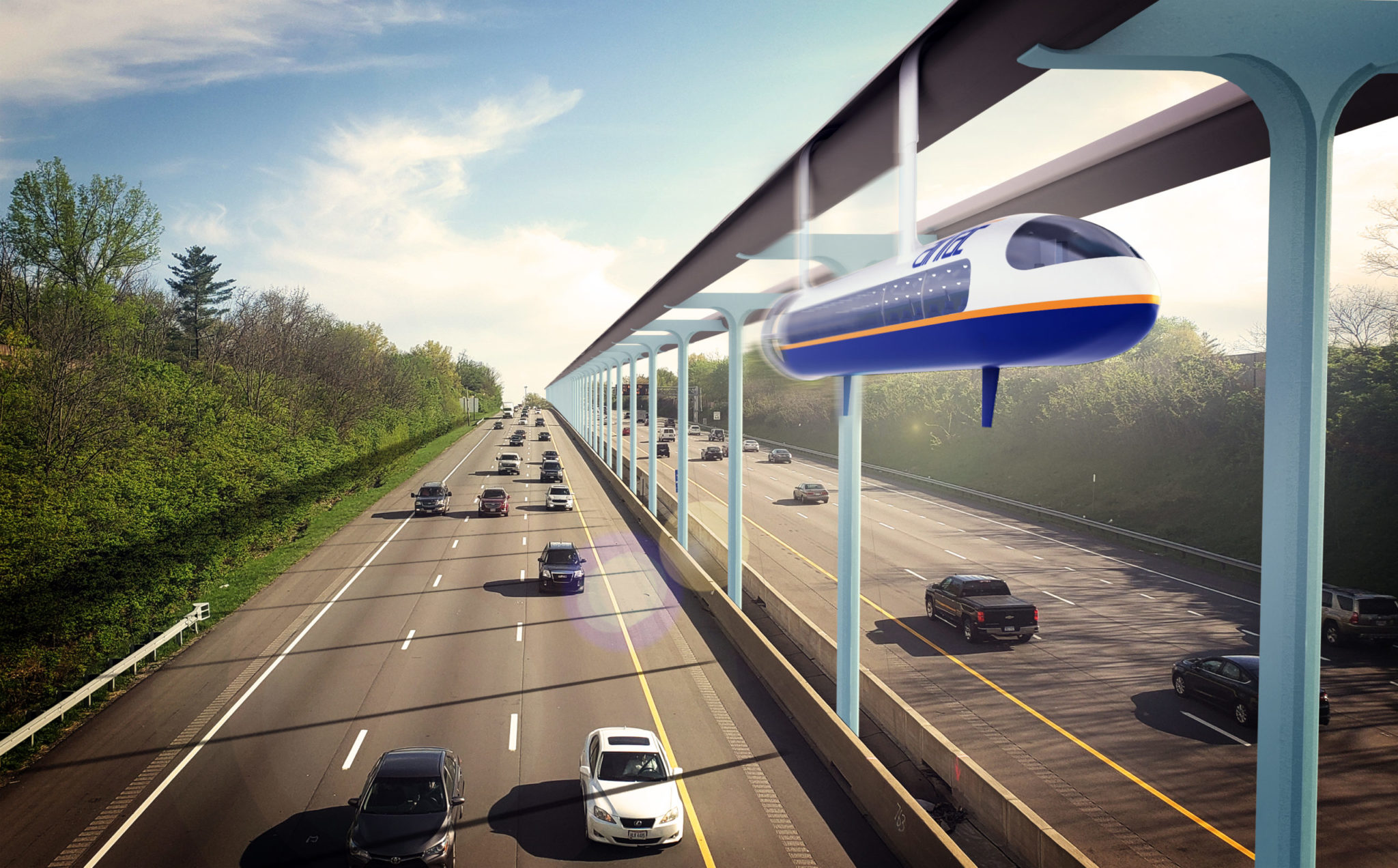
People the world over are connected to automobiles and the mobility they offer in ways not likely to change for the foreseeable future.
AirTrac will alleviate much of the burden from excessive highway congestion and expensive infrastructure buildout and maintenance. It is an additive technology to OTR trucking and a cost-effective alternative for rapid fulfillment freight transportation. AirTrac is also a point-to-point, passenger transit solution that will reduce congestion and commute times and make car ownership a more enjoyable experience.
Air
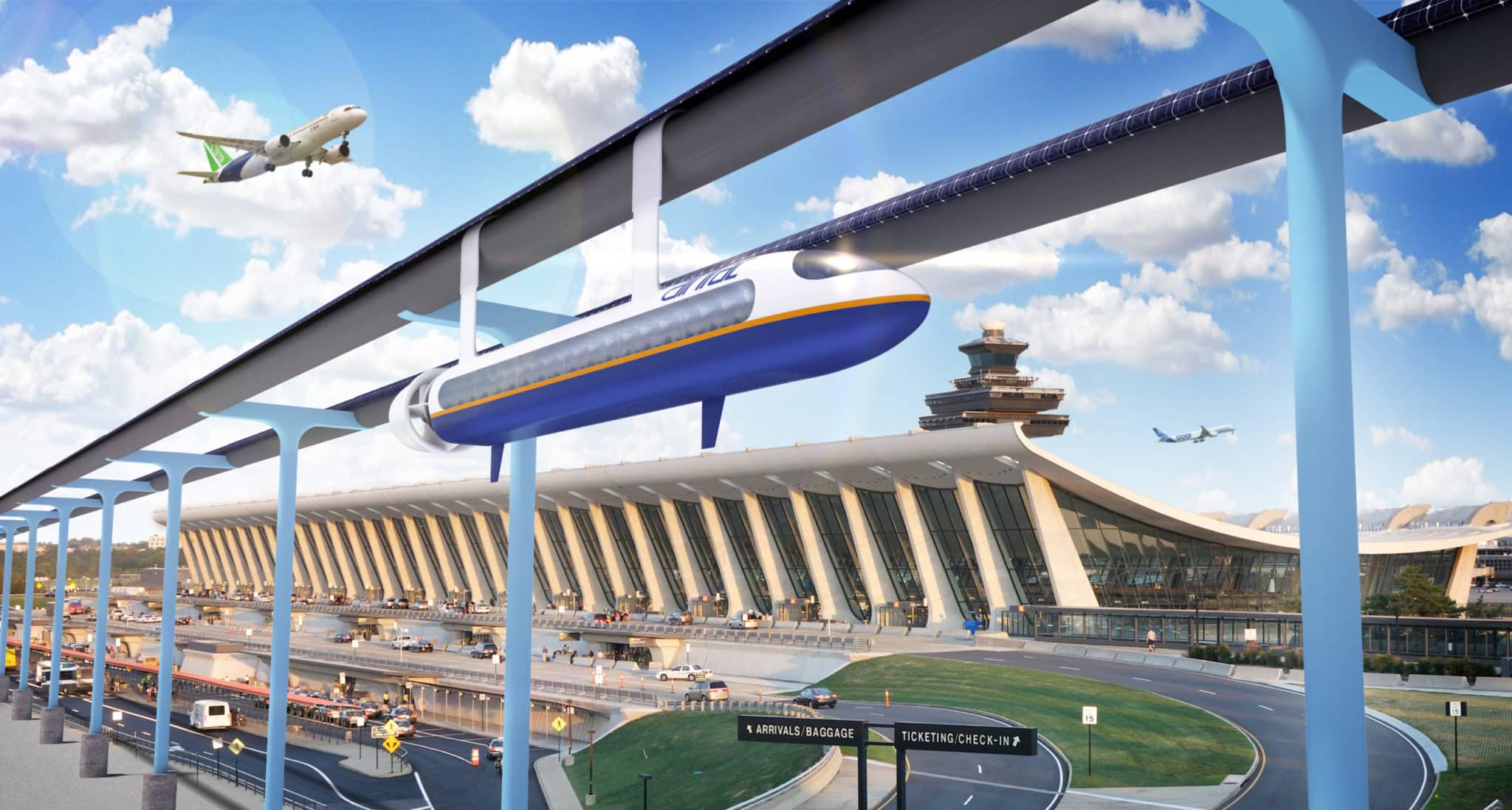
The aircraft itself is not what stands in the way of growth for air transportation and the airline industry. However, various infrastructure limitations pose a real challenge in light of future population growth and the subsequent, increased demand for air travel.
AirTrac will remove many of the infrastructure limitations that could inhibit the continued expansion of the airline industry. As an additive technology to both passenger and freight air transportation, AirTrac will help streamline point-to-point operations and increase overall efficiencies, to complement the continued growth and profitability of the airline industry.
Rail
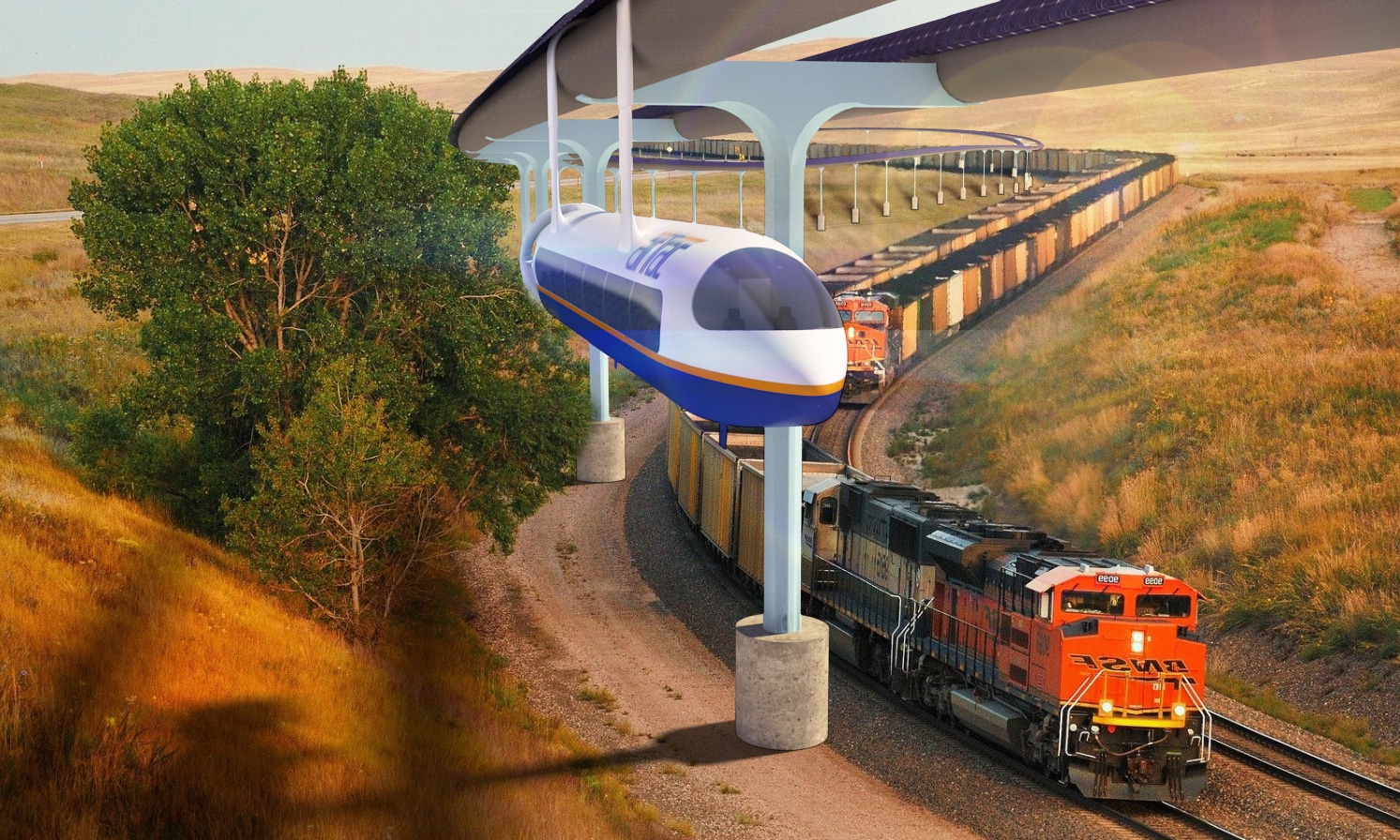
Railroads are optimally efficient and profitable when they are hauling heavy or bulk freight over long distances. AirTrac offers solutions to pain points that cause railroads to be less than optimally profitable and productive, specifically, light freight and passenger service.
AirTrac’s elevated and flexible guideway will not interfere but cooperate with current railroad infrastructure. Its ability to efficiently carry light freight and passengers will help to drive greater profitability for rail transportation, as the industry is able to maximize the large amount of underutilized, existing rights of way, and focus efforts on the most strategic and revenue generating objectives.
Proven Technology
AirTrac employs proven and demonstrated principles already in existence in aerospace and civil engineering. These principles are incorporated in novel and synergistic ways to advance a proprietary system design that combines air-cushion technology, advanced materials, and composite structures to specifically address modern-day infrastructure and mass transportation pain points.
Risk is minimized as AirTrac represents an actionable, design-and-build venture, as compared to a provisional, research-and-development speculation.
Affordable to Build & Maintain
AirTrac represents a cost-effective, real-world alternative to the cost-prohibitive solutions currently proposed for high-speed passenger and freight transit. All current propositions for high-speed ground transport assume the need for rigid rails and flat surfaces, which require the development of expensive megaton structures and massive infrastructure modifications.
Even if built successfully, these systems are only capable of operating at high speeds when traveling in a straight line.
AirTrac greatly reduces capital, operational, and maintenance costs and offers a significantly lower cost-per-mile to build than any other model, while offering point-to-point passenger and freight transportation that will stimulate jobs and industry.
A Better Way
Cost, Delay, and Impact of Expanding Current Options
Highway:
$50M+ / Mile 1 (Houston Circle Fwy.)
Air Congestion:
Air passengers x 2 in 15 years
Adding 1 Runway: $1 Billion
Rail (MS per pile):
| Type | Ground | Elevate |
|---|---|---|
| HSR | $89M | $258M |
| MagLev | $120M | $250M |
| HyperLoop | $83M | $121M |
| Light Rail | $43M | $204M |
| PRT ("Pods") | $8M | $80M |
| AirTrac | --- | $15-30M |

Construction
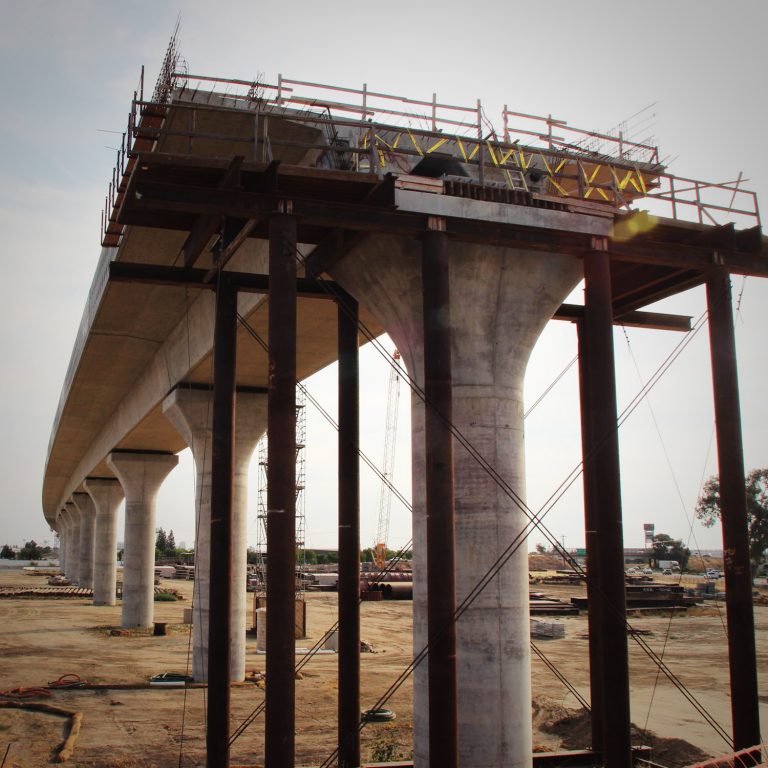
California High Speed Rail (HSR)

Traffic Congestion

US Air Congestion
High Speed
AirTrac will transport passengers and freight at high speeds along both intracity and intercity routes, designed to provide frequent departures, increased convenience, reduced travel costs and greater mobility for the majority of the population.
Traveling above congestion on elevated guideways at speeds of 90-100 MPH within a city, and up to 200 MPH between cities, AirTrac is capable of moving as many as 12,000 passengers per hour, per route.
Departing a nodal station approximately every two minutes, a dedicated freight system can deliver 360 tons of freight per hour. A system constructed primarily to transport people can also carry a combination of people and freight during non-peak hours.
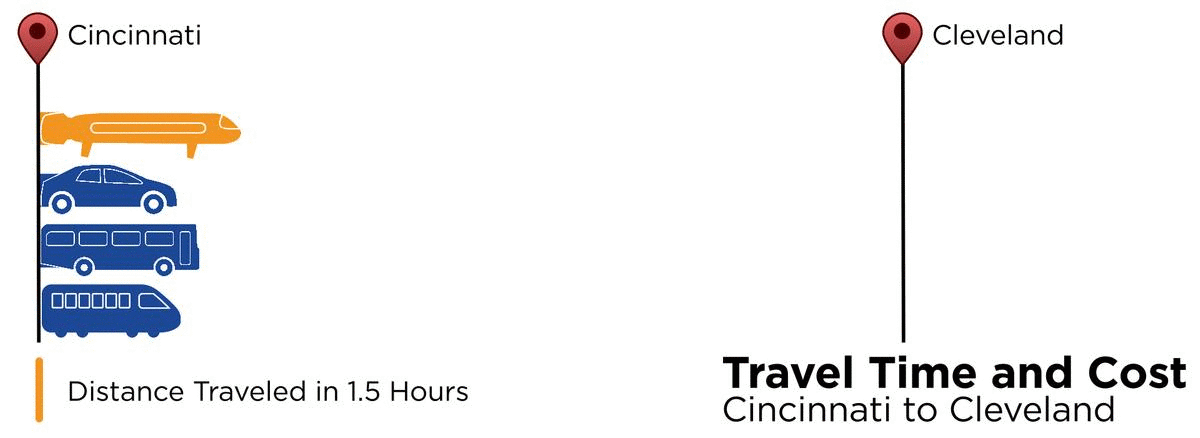

Point-To-Point Connectivity
Traveling at high speeds will no longer require moving from Point A to Point B along a straight line on a flat surface.
AirTrac will be the world’s first air cushion transportation system, featuring elevated, serpentine guideways that operate above traffic congestion and connect cities and regions in a way our country has never seen before.
Employing advanced materials such as carbon fiber, concentric air-cushion technology, and a high-speed switching mechanism, AirTrac will finally bridge the gap between the 70 MPH automobile and the 550 MPH airplane.
The high-speed switch enables a dynamic network of routes and the elevated guideway opens the opportunity to utilize and augment the current interstate highway system for rights of way. This makes possible the creation of new corridors where none previously existed by employing easements, or rent/purchase agreements. AirTrac’s land usage is very small, requiring approximately one acre per mile to set the towers. Life goes on under this light weight system.
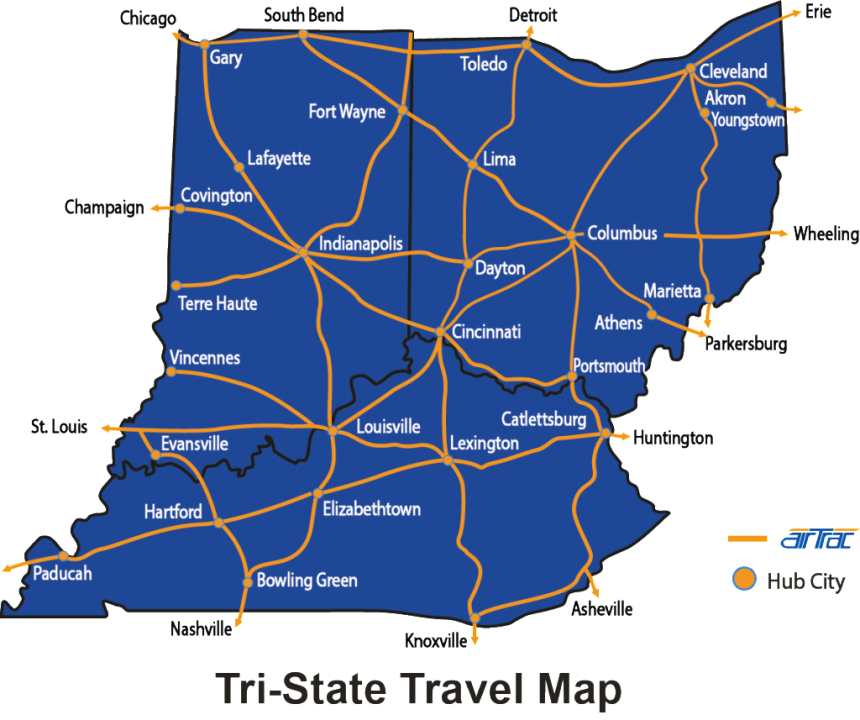

Sustainable & Environmentally Conscious
AirTrac is a revolutionary concept for true point-to-point, regional mass transit that is being designed with sustainability and the greater good top of mind.
AirTrac will be powered by all electric or electric/ hybrid propulsion systems that employ state-of-the-art processes and technologies to offer a green alternative to traditional mass transportation models.
AirTrac consumes less energy; emits fewer greenhouse gases; reduces air pollution traffic congestion and commute times; and, provides a safety valve for crowded metropolitan areas at a time of ever-increasing population density.
AirTrac’s use of aircraft style structures require far less materials for construction which dramatically reduces cost to build. The result is a transit system with the ability to make a substantial profit and remove taxpayer burdens.

Efficient Design
AirTrac’s lightweight, elevated network is designed to augment and advance current interstate highway infrastructure and can be installed without remodeling the environment. Suspension bridge technology will extend tower spacing to whatever specifications (height/distance) are required to pass over even the most difficult terrain.
Advanced materials and composite structures represent a significant departure from rigid rail technologies, which are inherently restricted by technical complexity and risk, high costs to design/build/maintain, and right of way acquisition.
Composite materials such as carbon fiber are drastically lighter and stronger than the structural equivalence of common metals such as aluminum and steel. This non-rigid design approach increases durability and reduces the weight and cost of the AirTrac system.
Since AirTrac has a modular, noncontingent and exchangeable guideway design unlike other transportation infrastructures such as railways and roads, it allows for easy and rapid repair if a segment is damaged or reaches its design limit. In the event that a segment of guideway needs replaced, the faulty section may be easily removed and replaced. This equals short delays and easy fixes.
Enhanced Safety
AirTrac is designed with superior safety features that will keep both passengers and freight moving safely and efficiently.
Anti-contagion air purification systems will be engineered into the design from the start, allowing for uninterrupted transport of people during times of heightened public health concern.
AirTrac’s elevated system eliminates the threat of crashes with other vehicles. The system is controlled by reliable computers that read sensor information collected through GPS satellites. Major disruptions to the system are immediately detected and safety protocols enacted without delay.
If for any reason a portion of the system has to be shut down for an extended period of time, an emergency egress system will be activated. The passenger vehicle will be mechanically decoupled from the support structure and lowered on cables much like an elevator. Passengers can then safely disembark and be taken to their point of destination from the nearest nodal station.

Workforce & Economic Development
The driving force behind AirTrac is a focused commitment to fostering greater mobility, and thereby greater opportunity for the advancement of people and society.
AirTrac will stimulate economic development, foster brand new opportunities for workforce development, and create quality jobs within new and existing vertical industries.
AirTrac will connect underserved communities and remote labor pools to business centers and innovation hubs. This will provide the opportunity for a greater percentage of people to meaningfully contribute to a sustainable and healthy domestic economy, which will in turn positively uplift families, communities, and the small businesses therein.
Reaching into these previously underserved areas and providing an affordable, convenient and sustainable solution for accessing quality jobs will stimulate local economies and engender lasting economic development opportunities in urban, suburban and rural areas.
